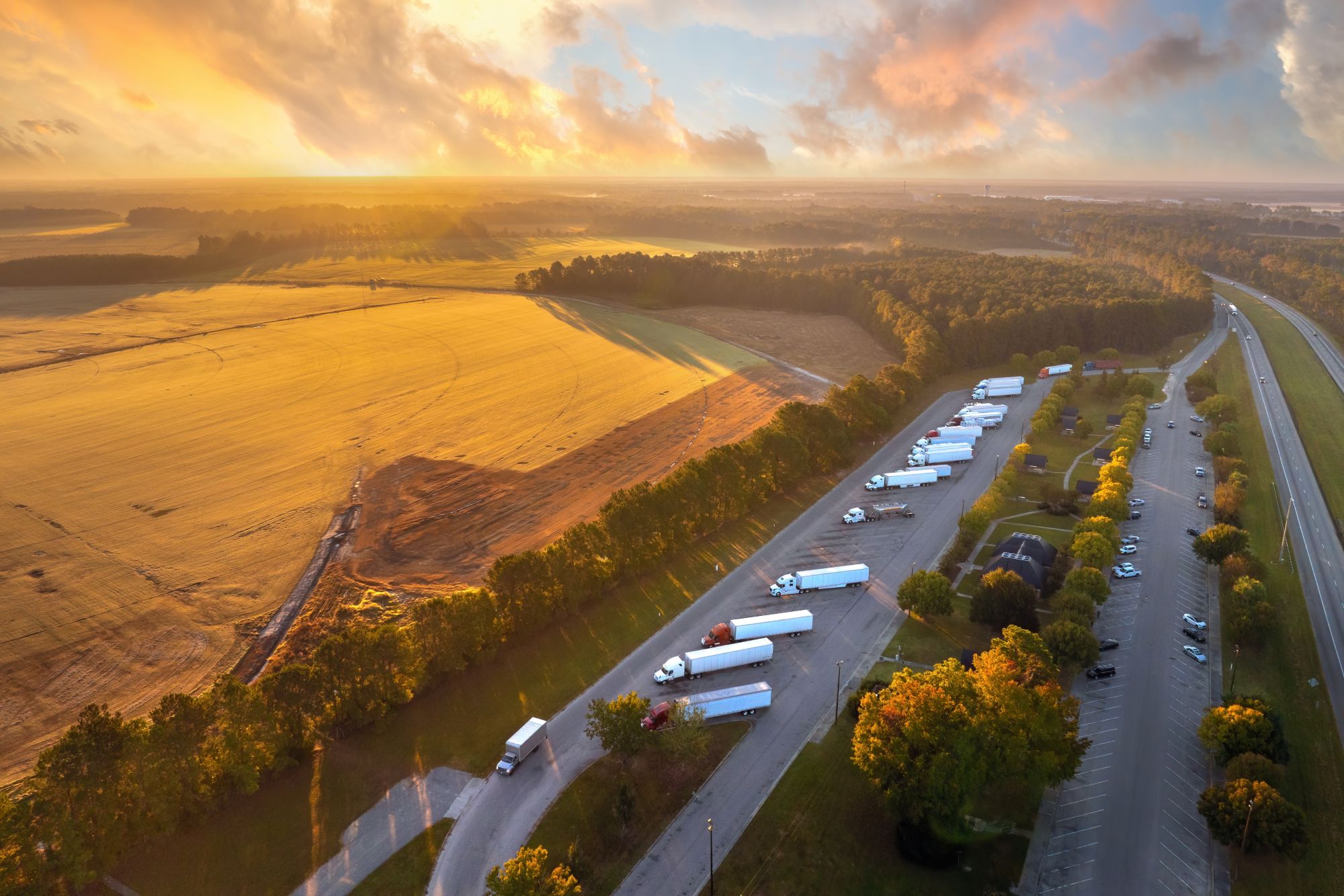
Guest
Como ser motorista de camião
Criado: 26/09/2025
•
Atualizado: 26/09/2025
Em toda a Europa, a procura de condutores profissionais de camiões nunca foi tão elevada. No Reino Unido, a Road Haulage Association estima que serão necessários [200 000 novos condutores de camiões] (https://www.rha.uk.net/news/news/detail/rha-report-200-000-hgv-drivers-needed-in-next-5-years) nos próximos cinco anos para manter as cadeias de abastecimento em funcionamento. E a situação é a mesma na maior parte da Europa. De acordo com dados da I[nternational Road Transport Union] (https://routinguk.descartes.com/resources/report-warns-of-european-shortage-of-hgv-drivers), em 2024 existiriam 426 000 postos de trabalho para motoristas por preencher em toda a Europa.
Mas isto cria uma oportunidade. Tal como [explorámos anteriormente] (https://snapacc.com/newsroom/is-logistics-a-new-alternative-to-further-education-for-school-leavers/), o sector dos transportes oferece a perspetiva de um trabalho estável para os jovens que abandonam a escola e consideram alternativas à universidade e para os adultos que procuram uma nova formação. Tornar-se motorista de camião é uma via para obter rendimentos seguros e uma carreira estruturada.
A questão que muitos colocam é: como se tornar um motorista de camião? A resposta não depende apenas da formação e das cartas de condução, mas também da compreensão do que significa ingressar numa profissão que mantém a economia europeia em movimento.
Quem pode tornar-se motorista de camião?
Um dos principais atractivos de uma carreira de condutor é a sua acessibilidade. Não é necessário um diploma universitário ou anos de formação especializada para começar; uma carta de condução automóvel normal (categoria B) é tudo o que é necessário antes de trabalhar para obter qualificações profissionais.
A idade mínima para a formação é de 18 anos, tanto no Reino Unido como em toda a UE, o que significa que os jovens que abandonam a escola podem passar diretamente de uma carta de condução automóvel para a formação profissional de condutores de veículos pesados. Dito isto, muitas empresas preferem que os condutores internacionais tenham pelo menos 21 anos, dada a responsabilidade acrescida que advém do transporte de longa distância.
A aptidão médica também é importante. Todos os candidatos têm de passar por um exame médico antes de poderem ser titulares de uma carta de condução de veículos pesados. No Reino Unido, este exame envolve uma série de testes, [incluindo] (https://www.hgvt.co.uk/hgv-medical/) controlos da visão, leituras da tensão arterial e despistagem de doenças como a epilepsia, doenças cardíacas ou apneia do sono.
Os países europeus aplicam as mesmas normas médicas a nível da UE, com renovações regulares que garantem que os condutores se mantêm saudáveis ao longo das suas carreiras.
Quanto ganha um motorista de camião?
Para muitas pessoas que estão a considerar a mudança para a condução profissional, uma das principais preocupações é: quanto ganham os condutores de camiões?
A resposta varia consoante o local, a experiência e o tipo de trabalho efectuado, mas, em toda a Europa, a profissão oferece um salário competitivo em comparação com outros empregos de nível básico.
Um novo motorista no Reino Unido [normalmente começa] (https://nationalcareers.service.gov.uk/job-profiles/large-goods-vehicle-driver) com cerca de £27.000 por ano. Aqueles que passam para o trabalho de longo curso, especialmente em rotas internacionais, podem ver o seu salário aumentar para £45.000 - por vezes mais se transportarem cargas especializadas ou perigosas.
Em [Espanha] (https://www.salaryexpert.com/salary/job/truck-driver/spain), os salários tendem a ser mais baixos do que no Reino Unido, normalmente cerca de 36 600 euros, embora as grandes empresas de logística nas principais cidades possam oferecer mais.
● [Polónia] (https://pln.currencyrate.today/convert/amount-92400-to-eur.html) registou uma forte procura de condutores nos últimos anos, mas os salários continuam a ser modestos, rondando em média os 92 400 PLN (cerca de 21 690 euros).
● [Roménia] (https://www.erieri.com/salary/job/heavy-truck-driver/romania#:~:text=Salary%20Recap,and%20anonymous%20employees%20in%20Romania.) situa-se no extremo inferior da escala, com os motoristas a ganharem geralmente 80.550 RON (16.000 euros), embora os contratos de transporte internacional possam aumentar significativamente o salário.
É claro que o salário não é tudo. Muitas empresas oferecem pagamento de horas extraordinárias, subsídios de refeição ou bónus por atingir os objectivos de entrega. E como a procura de motoristas não mostra sinais de abrandamento, o trabalho também traz um nível de segurança que poucas outras carreiras de nível básico podem igualar.
De que carta de condução de camiões necessito?
Antes de poder sentar-se ao volante de um camião, é necessário ter a carta de condução correta. No Reino Unido, isto significa progredir para além de uma carta de condução automóvel normal para o que é oficialmente conhecido como uma carta de condução de veículos de mercadorias de grande porte (LGV) ou de veículos pesados de mercadorias (HGV). Os termos são muitas vezes utilizados indistintamente, mas ambos abrangem as mesmas categorias de condução profissional.
Algumas pessoas começam com uma carta de condução da categoria C1, que abrange veículos de média dimensão entre 3,5 e 7,5 toneladas - frequentemente utilizada para camiões de entregas mais pequenos.
No entanto, a maioria dos aspirantes a condutores de camiões passa diretamente para a carta de condução de categoria C, por vezes designada por carta de condução de veículos pesados de mercadorias de classe 2. Esta carta permite-lhe conduzir veículos rígidos com mais de 7,5 toneladas. Para aqueles que pretendem progredir para camiões articulados - os veículos de maiores dimensões normalmente utilizados em percursos de longa distância e internacionais - é necessária a carta de condução da categoria CE (classe 1).
A par destas qualificações, existe o Certificado de Competência Profissional para Motoristas (CPC), um requisito legal tanto no Reino Unido como na UE. Este certificado envolve uma combinação de formação inicial e actualizações periódicas, concebidas para manter os condutores actualizados em matéria de segurança, regulamentação e competências rodoviárias.
Este sistema reflecte o quadro de licenciamento a nível da UE. As principais diferenças entre os países residem nos prestadores de formação, nos custos envolvidos e, em alguns locais, na disponibilidade de vagas para testes.

Como obter a sua carta de condução de veículos pesados
Obter a sua carta de condução de veículos pesados é o primeiro passo para a condução profissional. No Reino Unido, pode iniciar o processo quando tiver uma carta de condução de automóvel de categoria B. A partir daí, solicita uma carta de condução provisória para camiões, que lhe permite iniciar a formação em veículos de mercadorias de grande porte.
A formação em si combina elementos teóricos e práticos: sessões em sala de aula sobre segurança rodoviária e regulamentos, seguidas de condução supervisionada em veículos pesados. Os candidatos também têm de completar módulos para o Certificado de Aptidão Profissional para Motoristas (CPC), que garante que os motoristas estão equipados não só para conduzir veículos em segurança, mas também para gerir as exigências quotidianas do transporte.
Quanto custa tornar-se um condutor de camiões?
Uma das perguntas mais comuns para quem está a considerar esta carreira é quanto custa a formação de condutores de camiões. No Reino Unido, os preços variam consoante o fornecedor, a localização e o facto de se estar a treinar para uma carta de condução de Categoria C ou de Categoria CE, mais avançada. Em média, os novos condutores podem esperar gastar entre £2.000 e £3.500 para cobrir exames médicos, taxas de licença provisória, exames teóricos, formação prática, módulos CPC e o exame final de condução. Algumas empresas, especialmente as maiores empresas de logística, oferecem esquemas para subsidiar ou financiar totalmente a formação em troca de um compromisso de trabalho, tornando o percurso mais acessível.
Noutros países da Europa, os números não são muito diferentes. Em Espanha, a formação custa geralmente entre 2.000 e 3.000 euros para a formação completa e a certificação. Na Polónia, o valor é mais baixo, com uma média de 1.500 a 2.500 euros. A Roménia tem alguns dos custos de formação mais baixos da Europa, com muitos candidatos a pagarem cerca de 1.000 a 1.800 euros para se qualificarem, embora os salários de entrada tendam a refletir esta menor barreira à entrada.
Quanto tempo demora a tornar-se um motorista de camião?
O tempo que demora a qualificar-se como condutor de camiões depende do local de formação, do tipo de carta de condução que pretende obter e da rapidez com que consegue assegurar as datas dos exames. No Reino Unido, a maioria das pessoas completa a sua formação e passa nos testes num prazo de dois a quatro meses. Alguns cursos intensivos comprimem o processo numa questão de semanas, embora muitos condutores achem que o espaçamento das aulas os ajuda a absorver as competências de forma mais eficaz.
Em Espanha e na Polónia, o processo é semelhante, embora as listas de espera mais longas para as vagas nos exames possam prolongar o prazo. Na Polónia, a elevada procura de condutores profissionais criou estrangulamentos nos centros de formação, o que significa que alguns candidatos esperam vários meses antes de realizarem o exame prático. A Roménia tem um dos percursos mais rápidos, com a formação e os exames a serem frequentemente concluídos no prazo de oito a doze semanas.
E a aprendizagem não pára depois de obter a sua carta de condução. Todos os condutores profissionais devem completar 35 horas de formação CPC de cinco em cinco anos, mantendo as suas competências actualizadas e certificando-se de que estão preparados para os mais recentes regulamentos e normas de segurança.
Quanto tempo pode um motorista de camião conduzir?
Uma vez qualificado, o trabalho tem limites estritos quanto ao tempo que pode passar ao volante. Estes limites destinam-se a proteger tanto os condutores como os outros utentes da estrada, reduzindo a fadiga.
No Reino Unido e na UE, as regras são as mesmas. Os condutores podem passar um [máximo de nove horas ao volante] (https://www.gov.uk/drivers-hours/eu-rules#:~:text=9%20hours%20in%20a%20day,in%20any%202%20consecutive%20weeks) por dia, que pode ser alargado para dez horas duas vezes por semana. Os limites semanais limitam a condução a 56 horas, não podendo exceder 90 horas em duas semanas consecutivas.
O condutor deve igualmente fazer uma pausa de, pelo menos, 45 minutos após 4,5 horas de condução. Têm igualmente direito a períodos de repouso diários e semanais para recuperarem antes de regressarem ao trabalho.
Estas regras são controladas de perto, com tacógrafos instalados nos veículos para registar as horas e garantir o seu cumprimento. Para os que trabalham em rotas de longa distância, como os condutores espanhóis que cobrem a Península Ibérica ou os transportadores polacos que transportam mercadorias através das fronteiras orientais da UE, estes limites moldam o ritmo do trabalho. Determinam quando e onde os condutores param, tornando o acesso a áreas de descanso seguras e protegidas uma parte vital do dia de trabalho.
Começar a trabalhar como motorista de camião
Tornar-se um motorista de camião não é apenas uma questão de passar nos testes. Trata-se de assumir um papel que acarreta uma responsabilidade real, mas também traz oportunidades a longo prazo. Com a carta de condução correta, a formação adequada e a determinação para enfrentar a vida na estrada, esta é uma carreira que pode proporcionar estabilidade e progressão.
Na SNAP, sabemos como são essas deslocações. É por isso que trabalhamos com frotas e condutores em toda a Europa para as tornar mais seguras, mais simples e mais confortáveis - desde estacionamento seguro e melhores instalações de bem-estar a ferramentas digitais inteligentes que poupam tempo e stress. Quer esteja apenas a começar ou já conduza há anos, estamos aqui para o apoiar em cada quilómetro do caminho.
Descarregue a [aplicação intruck] (https://intruckapp.com/download/) hoje mesmo para encontrar estacionamento, instalações e serviços de confiança, onde quer que o seu percurso o leve.



